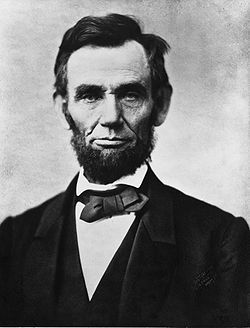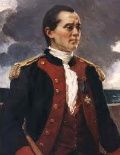This is your morning Open Thread. Pour your favorite beverage and review the past and comment on the future.
Find the past “On This Day in History” here.
November 10 is the 314th day of the year (315th in leap years) in the Gregorian calendar. There are 51 days remaining until the end of the year.
On this day in 1975, the 729-foot-long freighter SS Edmund Fitzgerald sinks during a storm on Lake Superior, killing all 29 crew on board.
SS Edmund Fitzgerald (nicknamed “Mighty Fitz,” “The Fitz,” or “The Big Fitz”) was an American Great Lakes freighter launched on June 8, 1958. At the time of its launching, it was one of the first boats to be at or near maximum “St Lawrence Seaway Size” which was 730 feet (220 m) long and 75 feet (23 m) wide. From its launching in 1958 until 1971 the Fitzgerald continued to be one of the largest boats on the Great Lakes.
Fitzgerald left Superior, Wisconsin on the afternoon of Sunday, November 9, 1975 under the command of Captain Ernest M. McSorley. It was en route to the steel mill on Zug Island, near Detroit, Michigan, with a full cargo of taconite. A second freighter under the command of Captain Jesse B. “Bernie” Cooper, Arthur M. Anderson, destined for Gary, Indiana out of Two Harbors, Minnesota, joined up with Fitzgerald. Fitzgerald, being the faster ship, took the lead while Anderson trailed not far behind. The weather forecast was not unusual for November and called for a storm to pass over eastern Lake Superior and small craft warnings.
Crossing Lake Superior at about 14 knots (26 km/h; 16 mph), the boats encountered a massive winter storm, reporting winds in excess of 50 knots (93 km/h; 58 mph) with gusts up to 86.9 knots (160.9 km/h; 100.0 mph) and waves as high as 35 feet (11 m). Visibility was poor due to heavy snow. The Weather Bureau upgraded the forecast to gale warnings. The freighters altered their courses northward, seeking shelter along the Canadian coast. Later, they would cross to Whitefish Bay to approach the locks.When the storm became intense, the Soo Locks at Sault Ste. Marie were closed.
Late in the afternoon of Monday, November 10, sustained winds of 50 knots were observed across eastern Lake Superior. Anderson was struck by a 75-knot (139 km/h; 86 mph) hurricane-force gust. At 3:30 pm, Captain McSorley radioed the Anderson to report that she was taking on water and had top-side damage including that the Fitzgerald was suffering a list, and had lost two vent covers and some railings. Two of the Fitzgerald’s six bilge pumps were running continuously to discharge shipped water.
At about 3:50 pm, McSorley called the Anderson to report that his radar was not working and he asked the Anderson to keep them in sight while he checked his ship down so that the Anderson could close the gap between them. Fitzgerald was ahead of Anderson at the time, effectively blind; therefore, she slowed to come within 10 miles (16 km) range so she could receive radar guidance from the other ship. For a time the Anderson directed the Fitzgerald toward the relative safety of Whitefish Bay. McSorley contacted the U.S. Coast Guard station in Grand Marais, Michigan after 4:00 pm and then hailed any ships in the Whitefish Point area to inquire if the Whitefish Point light and navigational radio beacon were operational. Captain Cedric Woodard of the Avafors answered that both the light and radio direction beacon were out at that moment. Around 5:30 pm, Woodward called the Fitzgerald again to report that the Whitefish point light was back on but not the radio beacon. When McSorley replied to the Avafors, he commented, “We’re in a big sea. I’ve never seen anything like it in my life.”
The last communication from the doomed ship came at approximately 7:10 pm, when Anderson notified Fitzgerald of an upbound ship and asked how it was doing. McSorley reported, “We are holding our own.” A few minutes later, it apparently sank; no distress signal was received. Ten minutes later Anderson could neither raise Fitzgerald by radio, nor detect it on radar. At 8:32 pm, Anderson was finally able to convince the U. S. Coast Guard that the Fitzgerald had gone missing. Up until that time, the Coast Guard was looking for a 16 foot outboard lost in the area. The United States Coast Guard finally took Captain Cooper of the Anderson seriously shortly after 8:30 pm. The Coast Guard then asked the Anderson to turn around and look for survivors.
The Edmund Fitzgerald now lies under 530 feet of water, broken in two sections. On July 4, 1995, the ship’s bell was recovered from the wreck, and a replica, engraved with the names of the crew members who perished in this tragedy, was left in its place. The original bell is on display at the Great Lakes Shipwreck Museum at Whitefish Point in Michigan.

 On this day in 1872, fire rips through Boston.
On this day in 1872, fire rips through Boston. 

 The British Egyptologist
The British Egyptologist 
 After departing Brest, Jones successfully executed raids on two forts in England’s Whitehaven Harbor, despite a disgruntled crew more interested in “gain than honor.” Jones then continued to his home territory of Kirkcudbright Bay, Scotland, where he intended to abduct the earl of Selkirk and then exchange him for American sailors held captive by Britain. Although he did not find the earl at home, Jones’ crew was able to steal all his silver, including his wife’s teapot, still containing her breakfast tea. From Scotland, Jones sailed across the Irish Sea to Carrickfergus, where the Ranger captured the HMS Drake after delivering fatal wounds to the British ship’s captain and lieutenant.
After departing Brest, Jones successfully executed raids on two forts in England’s Whitehaven Harbor, despite a disgruntled crew more interested in “gain than honor.” Jones then continued to his home territory of Kirkcudbright Bay, Scotland, where he intended to abduct the earl of Selkirk and then exchange him for American sailors held captive by Britain. Although he did not find the earl at home, Jones’ crew was able to steal all his silver, including his wife’s teapot, still containing her breakfast tea. From Scotland, Jones sailed across the Irish Sea to Carrickfergus, where the Ranger captured the HMS Drake after delivering fatal wounds to the British ship’s captain and lieutenant.
Recent Comments